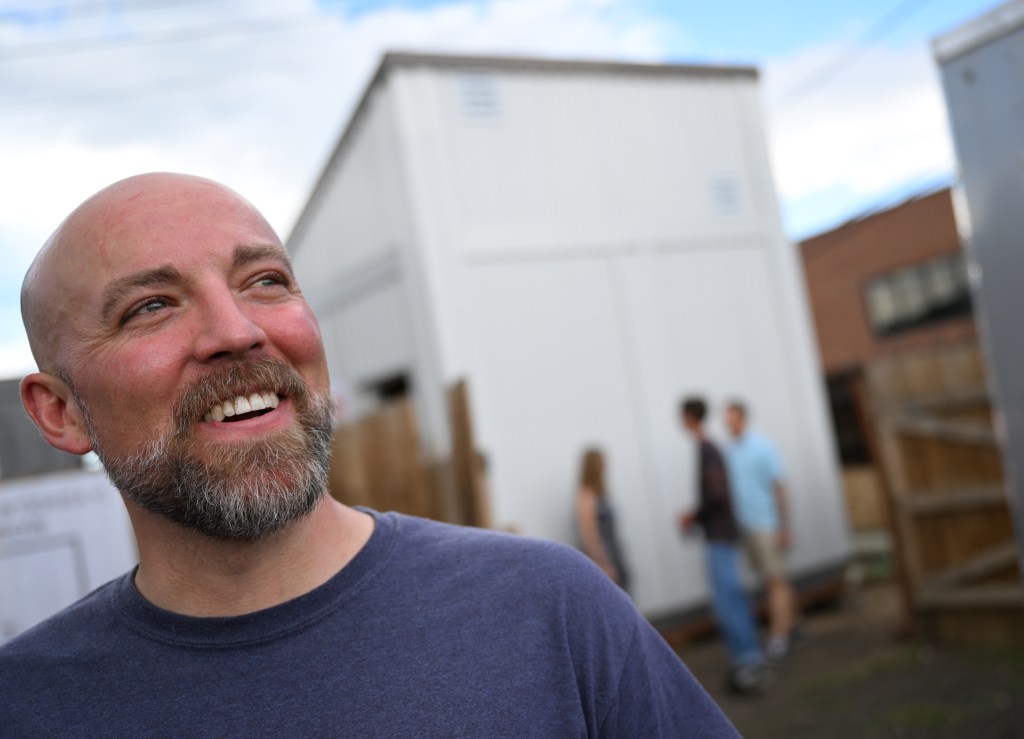ARTICLE TEXT
Colorado’s housing shortage has gotten so severe that the state is now directing millions of dollars to finance factories that can lower construction costs and to assist companies in developing innovative construction methods.
The goal is to improve affordability for those living in Colorado but also to make the state a leader in a sector that has suffered from severe productivity problems for decades, one that mounting labor shortages will worsen over time.
“We are trying to help an issue that we had some role in creating,” said Jack Tiebout, senior program manager for the Innovative Housing Incentive Program, or IHIP, which is administered through the Colorado Office of Economic Development and International Trade (OEDIT).
OEDIT has helped bring tens of thousands of jobs to Colorado through its various incentive programs, but that success also exposed the inability of developers and contractors to keep up with accommodations for a growing population.
“The shortage as projected by Housing Colorado is at 225,000 units now,” said Hilary Cooper, director of Innovative Funding for Housing Programs within OEDIT.
Back in 2021, the Common Sense Institute estimated the state was only adding just more than half of the 54,190 new units it needed to average per year over the next five years to fill the existing shortfall and keep up with population gains.
The chief tool OEDIT has at its disposal currently is the Innovative Housing Incentive Program, which the Legislature provided with $40 million in funding, Tiebout said. More money — a lot more — will come through Proposition 123, which directs a sliver of state income tax revenues to housing, including the construction of factories.
Under IHIP, qualified businesses can receive working capital grants of up to 20% of their operational expenses on a monthly basis, up to $350,000, with an additional $50,00 bonus for producing affordable housing. For businesses operating in Just Transition Communities, places like Pueblo and Craig, the base grant can go up to $450,000.
Another direct incentive is available to housing manufacturers of $1,500 to $6,000 per unit created and installed in Colorado. Higher grant amounts are given to homes that are affordable and energy efficient.
And there are concessionary loans, meaning they have lenient terms, for those looking to build or expand factory space tied to housing construction. And in some cases, those housing grants can be stacked with incentives for bringing new jobs to the state.
The first round of IHIP grants, completed in March, extended $4.2 million to three companies in return for the construction of 1,000 homes. The firms expect to complete more than 4,000 homes over the next three years.
Awards included $1.5 million to Key Structures of Pueblo, a maker of modular housing for median-income households; $1.4 million to Fading West Development of Buena Vista, which produces modular homes in a factory setting; and $1.3 million to Simple Homes of Denver, which has delivered 650 units since opening a manufacturing facility in 2019.
“Our niche is our panelized building system and in working with builders who would have stick framed those projects,” said Jeff Hopfenbeck, CEO of Simple Homes. “We are introducing more technologically advanced solutions to part of the puzzle.”
Sweden, where 80% to 90% of the wood-based construction is pre-fabricated, was a source of inspiration for the company. A factory setting allows for work to be done day and night and across seasons in safer conditions. It provides for more precise tolerances, better quality control and generates less waste.
Although the company’s pre-fabricated homes are competitive with stick-built homes in terms of cost, where the savings really kick in are in assembly times, Hopfenbeck said.
The company has put together a three-story triplex of 7,000 square feet in a single day. And at a build-to-rent community in Longmont of 240 homes, Simple Homes, a third of the way in, has cut the completion times in half compared to traditional methods, Hopfenbeck said.
Hopfenbeck said the state incentives help when it comes to working capital, which is a challenge for fast-growing companies that are trying to establish themselves.
“It allows us to be competitive on savings. We can pass some of those savings to customers, who pass those on to their end customers,” he said. Once customers try Simple Homes, and a lower price-point can help, they tend to be “sticky,” he added.
The company, which has 85 employees, was able to turn a profit last year, but like the entire construction industry, it has struggled with a slowdown caused by higher interest rates.
Tiebout said about 18 companies have applied to pre-certify with the state to receive incentives. About 50 companies are on the state’s radar, ranging from tiny startups to out-of-state companies looking to locate major manufacturing facilities.
Some, like Simple Homes, focus on panelized homes or completing key components like the walls, floors and trusses in a factory and assembling them on-site. Other companies take a modular approach, both building and assembling the components in a factory. Transportation of the shell is more problematic in that approach.
Kit builders, who assemble and ship all the components needed for a home to a construction site, are another innovative approach the state will fund. But they aren’t new. Sears Roebuck offered kit homes in its catalog in 1908 and shipped more than 70,000 before stopping in 1940.
One of the most innovative approaches involves 3-D printing, where a massive “printer” precisely extrudes material, say concrete, to build a home on the site. Some firms are looking to build 3-D printers and print homes, while others are wanting to build the equipment and lease it out.
If time is money, then building homes in factories with fewer workers is one way to save money, especially as the construction sector struggles with an aging workforce, ongoing labor shortages and younger generations less willing to learn the skilled trades.
For a variety of reasons, a manufacturing approach was largely rejected in the U.S. decades ago, setting the course for underproduction and spiraling home prices. Home construction productivity was 40% lower in 2020 than in 1970, even as all the other sectors of the economy doubled their productivity in that same time frame, according to the U.S. Bureau of Labor Statistics.
“Prefabricated factory-built housing costs about one-third as much as traditional ‘stick-built housing,’ but it constitutes just 10% of new single-family home construction today,” notes Jason Mejia, a visiting fellow with the Foundation for Research on Equal Opportunity, in a blog post.
Last month, Golden startup Addazu unveiled its first prototype, a small mining cabin at 130 square feet made of panels put together in a factory. Individual panels can be combined to create everything from tiny homes to three-story triplexes.
The cost for the tiniest home will be about $30,000 once production is underway, said CEO Kelly Pickering. His hope is that new Denver Mayor Mike Johnston will consider Addazu as an option when it comes to moving those living on the streets into more permanent shelters.
Pickering, who decided to focus on the housing affordability problem while attending the Colorado School of Mines, plans to test the structure against the Colorado elements at 11,000 feet near Montgomery Reservoir.
And he is also looking at obtaining state incentives to help ramp up production.
The IHIP program is capped at $40 million, but a lot more money will become available in Colorado to innovators like Addazu, which is the Welsh word for adaptable. Proposition 123 redirects one-tenth of 1% of state income tax revenues, and could provide $300 million a year.
Of that amount, 40% will go to the Colorado Division of Housing to address more immediate housing concerns, such as homelessness, and another 60% will go through OEDIT, which is working with the Colorado Housing and Finance Authority (CHFA) to finance longer-term solutions.
The OEDIT/CHFA share will finance land banking or the acquisition of land for affordable housing by approved local governments via grants and nonprofits via forgivable loans. Another portion will fund housing options for low-income to middle-income households. And a third will provide concessionary debt, or loans that carry more favorable terms, to support factory construction for products that attach to a foundation.
Anywhere from 15% to 35% of the 60% share that OEDIT receives could help with factory construction, said Steve Boice, manager of business finance at CHFA.
The companies that have expressed interest in loans are looking at investments of anywhere from $5 million to $50 million, he said, with guidelines expected out next month, he said.


